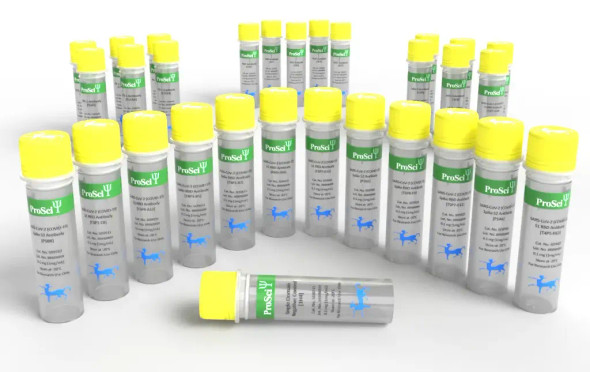ProSci
ER Signaling Protein Detection Set
- SKU:
- PSI-1814
- Weight:
- 0 KGS
- Shipping:
- Calculated at Checkout
Description
ER Signaling Protein Detection Set | PSI-1814 | ProSci
Host: N/A
Reactivity: Human
Homology: N/A
Immunogen: Rabbit polyclonal antibodies were raised against peptides corresponding to amino acid sequences from each of the corresponding proteins.
Tested Application: WB, IHC, IF
Application: These polyclonal antibodies can be used for detection of ATF6, Caspase 12, IRE1p and XBP1 by immunoblot at 1 - 2 μg/mL. ATF6, Caspase 12, IRE1p and XBP1 antibodies can detect their respective proteins via immunohistochemistry at 1 - 10 μg/mL, and Immunoflourescence.
Specificity: N/A
Purification: Antibodies are supplied as affinity chromatography purified IgG.
Clonality: Polyclonal
Isotype: N/A
Conjugate: N/A
Physical State: Liquid
Buffer: PBS containing 0.02% sodium azide.
Concentration: Antibody 1 mg/mL
Storage Condition: Stable at 4˚C for three months, store at -20˚C for up to one year.
Background: The endoplasmic reticulum (ER) is an organelle composed of an interconnected network of tubules, vesicles and cisternae found in all eukaryotic cells. It is involved in several specialized processes such as protein translation, folding, and transport of proteins to be used in the cell membrane or secreted from the cell. Accumulation of malfolded proteins in the ER activates the unfolded protein response (UPR) and the upregulation of the ER molecular chaperones GRP78 and GRP 94. These proteins are normally bound to ER transmembrane proteins such as IRE1p and ATF6 but ER stress causes their dissociation. This allows IRE1p, a serine-threonine protein kinase, to transduce the unfolded protein signal from the ER to the nucleus. IRE1p also has an endoribonuclease activity that is required to splice X-box binding protein (XBP1) mRNA, converting it to a potent UPR transcriptional activator. ER stress also causes the cleavage of ATF6, yielding a cytosolic fragment which migrates to the nucleus and together with XBP-1, activates transcription of UPR-responsive genes. Depletion of IRE1p through the expression of a dominant negative form of IRE1p has no effect on transfected cells, but cell death via apoptosis occurs under stress conditions that cause unfolded proteins to accumulate in the ER.
For images please see PDF data sheet
User Note: Optimal dilutions for each application to be determined by the researcher.
























































































